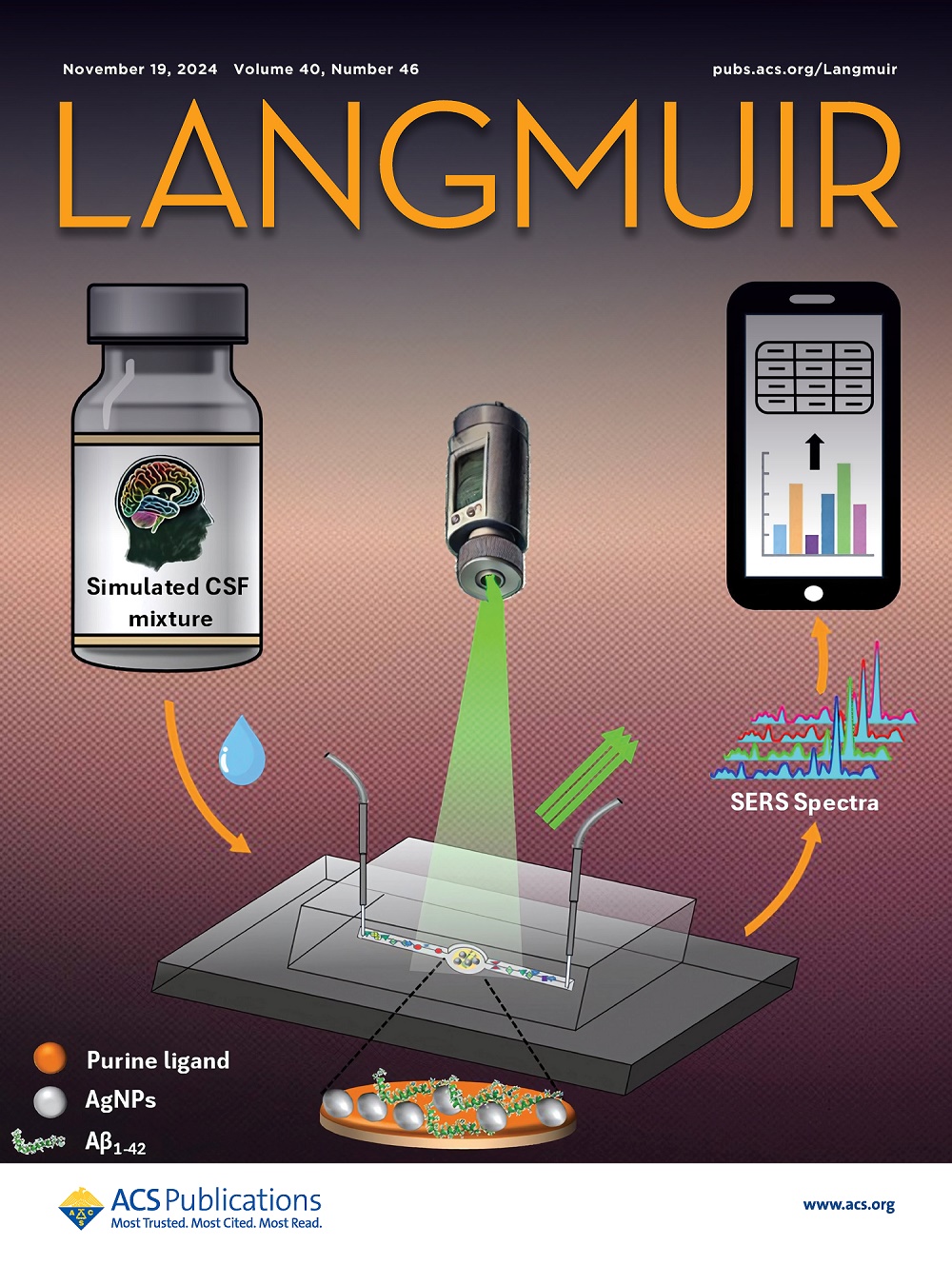体纳米气泡的界面性质和热力学/动力学稳定机制:分子动力学模拟研究。
IF 3.9
2区 化学
Q2 CHEMISTRY, MULTIDISCIPLINARY
引用次数: 0
摘要
体积纳米气泡可以在溶液中保持数小时或数天的稳定,但气泡的稳定机制仍然存在很大的争议,缺乏系统的研究和理论解释。本研究采用分子动力学模拟方法,采用全原子模型构建了不同尺寸的氮氧纳米气泡,并从热力学、力学力学、能量学、扩散动力学等多个维度系统分析了纳米气泡的稳定机理,验证了某些理论和方程的适用性。研究结果表明,纳米气泡内的气体密度明显高于标准温度和压力条件下的气体密度2个数量级以上。气泡表面形成气液界面层和水化层,水化层随气泡尺寸的增大而减小。气泡表面的氢键结构密度小于液态水,电荷分布呈现典型的“内正外负”双层结构特征。气泡内外存在显著的压差,这一现象符合Young-Laplace方程。动力学模拟结果与Einstein-Stokes方程计算的扩散系数一致,气体扩散能力随气泡尺寸的增大而减小。气泡内气体溶解度远高于亨利定律计算的标准饱和溶解度。结果与Epstein-Plesset的纳米气泡寿命理论趋势一致。该研究增强了微观层面对纳米气泡稳定机理的理解,为纳米气泡在水处理中的空化和传质中的潜在应用提供了重要的理论基础和实践指导。本文章由计算机程序翻译,如有差异,请以英文原文为准。
The Interfacial Properties and Thermodynamic/Kinetic Stabilization Mechanisms of Bulk Nanobubbles: A Molecular Dynamics Simulation Study.
Bulk nanobubbles can remain stable in solution for hours or days, but the stabilization mechanism of bubbles remains highly controversial, lacking systematic research and theoretical explanations. This study employed molecular dynamics simulation, using an all-atom model to construct nitrogen and oxygen nanobubbles of different sizes, and conducted a systematic analysis of nanobubble stabilization mechanisms from multiple dimensions, including thermodynamics, mechanical mechanics, energetics, and diffusion dynamics, while verifying the applicability of certain theories and equations. The research results indicate that the gas density inside nanobubbles is significantly higher than that under standard temperature and pressure conditions by more than 2 orders of magnitude. The bubble surface forms a gas-liquid interface layer and hydration layer, which decreases with increasing bubble size. The hydrogen bond structure density on the bubble surface is smaller than that in liquid water, and the charge distribution exhibits a typical "positive inside, negative outside" double-layer structural characteristic. There is a significant pressure difference inside and outside the bubble, a phenomenon that conforms to the Young-Laplace equation. The dynamical simulation results are consistent with the diffusion coefficients calculated by the Einstein-Stokes equation, and the gas diffusion capacity decreases with increasing bubble size. The gas solubility inside the bubble is far higher than the standard state saturation solubility calculated by Henry's law. The results are consistent with the Epstein-Plesset theoretical trend of nanobubble lifetime. This study enhances the microscopic-level understanding of nanobubble stabilization mechanisms, providing a critical theoretical basis and practical guidance for their potential applications in cavitation and mass transfer within water treatment.
求助全文
通过发布文献求助,成功后即可免费获取论文全文。
去求助
来源期刊

Langmuir
化学-材料科学:综合
CiteScore
6.50
自引率
10.30%
发文量
1464
审稿时长
2.1 months
期刊介绍:
Langmuir is an interdisciplinary journal publishing articles in the following subject categories:
Colloids: surfactants and self-assembly, dispersions, emulsions, foams
Interfaces: adsorption, reactions, films, forces
Biological Interfaces: biocolloids, biomolecular and biomimetic materials
Materials: nano- and mesostructured materials, polymers, gels, liquid crystals
Electrochemistry: interfacial charge transfer, charge transport, electrocatalysis, electrokinetic phenomena, bioelectrochemistry
Devices and Applications: sensors, fluidics, patterning, catalysis, photonic crystals
However, when high-impact, original work is submitted that does not fit within the above categories, decisions to accept or decline such papers will be based on one criteria: What Would Irving Do?
Langmuir ranks #2 in citations out of 136 journals in the category of Physical Chemistry with 113,157 total citations. The journal received an Impact Factor of 4.384*.
This journal is also indexed in the categories of Materials Science (ranked #1) and Multidisciplinary Chemistry (ranked #5).
 求助内容:
求助内容: 应助结果提醒方式:
应助结果提醒方式:


